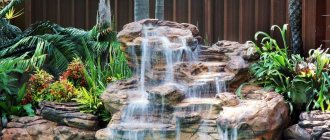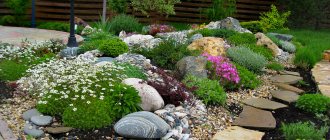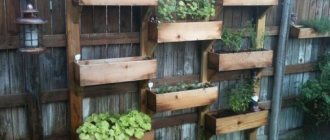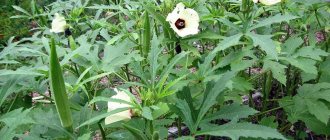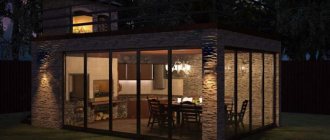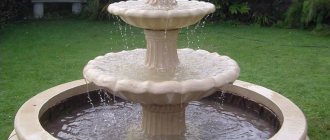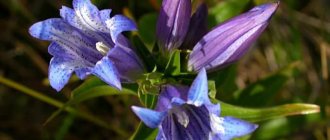Landscape style imitates the natural landscape created by nature. At first glance, it seems that arranging such a garden is not difficult, but it is not so. It is necessary to have artistic taste and a sense of proportion, to know and take into account many nuances (landscape features, local flora, etc.). All lines, transitions and elements of landscape design should be smooth, soft and natural. There is no place for clear geometric shapes and symmetry.
Thanks to this solution, upon crossing the threshold of the house, a person immediately finds himself in the lap of nature. This style is always a modern classic that does not lose its relevance over time.
History and varieties of landscape style
The landscape style in landscape design began to emerge in contrast to the park style dictated by Versailles in England in the 18th century. Unlike the regular style, which symbolizes the taming of nature by human civilization (carefully pruned plants, clear geometric shapes, straight lines), the landscape is based on the harmony that was originally inherent in nature in a particular area.
Today, landscape style is usually divided into four main types:
- English is the most original version of this style, both aristocratic and natural (this applies to buildings, plants and the landscape as a whole).
- Romantic – permeated with harmony and love. It involves the arrangement of quiet ponds, sculptures, benches and shady nooks.
- Forest - most similar to a well-kept natural park in which large trees grow.
- NaturGarden is a type of landscape style recently created by Piet Oudolf (Netherlands), in which apparent disorder and deliberate slight negligence emphasize the beauty of the natural form of each plant.
Each of these four varieties has common features - they do not have strict geometric shapes, smooth planes and straight lines.
Elements for creating landscape design
Creating a landscape on the plots of a country house in a natural style involves a huge amount of work, which is aimed at selecting and placing each element in the garden. These include not only the plants themselves, but also various architecture, suitable furniture and lamps. They also pay special attention to paths and ponds.
Water
In almost every style of landscape design there is a main detail, and in English it is a pond. It is he, and not the house (which is often hidden among the greenery and practically not visible) that becomes the main decoration of the site. Moreover, it is almost impossible to distinguish it from a natural reservoir - the coastlines have smooth and natural curves, and the bottom is covered with stone or brick.
In addition to the central reservoir, the parks, designed in the English style, have many different canals and streams, artificially dug and lined with reeds. You can often find picturesque bridges, as well as small gazebos or pavilions. There are also benches throughout the territory in the most picturesque places, and barrels or wooden birdbaths can serve as additional decoration.
Lawn
An important aspect of the natural style in landscape design is the natural relief, which is characterized by bends and irregularities (they are specially played out and emphasized in every possible way). Moreover, if the site is located on a flat area, they even resort to its artificial creation. It is this design detail that is especially emphasized by a properly selected lawn. The best option would be to plant several types of herbs at once, mixed with seeds of wild plants characteristic of the selected area.
Did you know? The most famous garden designed in the English style is the Englischer Garten in Munich, which was founded at the end of the 18th century by the architect Friedrich Schkel. The length of walking paths in it is more than 66 km.
A good option may be to choose a Moorish lawn, the mixture for which contains seeds of various flowers (poppies, field cornflowers, chamomile, echinacea, nemesia, flax) and perennial ornamental cereal crops (fragrant bison, wheatgrass, lagurus and others). Also on the lawn you can find many early flowering bulbous plants (crocuses, proliskis, tulips and others).
The wide popularity of lawns is quite justified - this approach allows you to significantly expand the area visually, as well as obtain a predominance of calm green tones. As an alternative, backfilling with natural stone, gravel, pine cones or tree bark, which is laid on a special geotextile (the material allows water to pass through well and prevents plant germination), or planting ground cover crops (gerbil, hernia, cotula, sedum) can be considered.

Paths and platforms
Both paths and platforms in landscape-style parks are laid in those places that are most convenient for these purposes. Moreover, this direction of landscape design necessarily includes a walking route with stops at observation platforms, which allows you to show all the landscapes in a favorable light, and it is laid throughout the entire territory of the site. The main material used to create paths and fences is natural stone, wood or gravel.
In addition, in the natural landscape you can often find berso - a covered gallery is installed along garden paths, which consists of curved supports with crossbars. Climbing plants planted next to the structure are attached to the frame, so that after they grow, a living tunnel is formed. It acts as a natural protection against heat and sun rays.
We advise you to learn more about the landscape in the classical style.
Architecture and furniture
In landscape-style gardens you can often find various decorative architectural objects in the form of small antique sculptures, ceramic figurines or multi-colored lamps, which in the evening focus attention on all the accessories. At the same time, each element should fit into the overall picture as organically as possible, not stand out from it and not disturb the harmony.
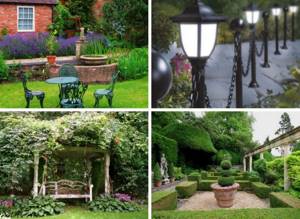
The same applies to furniture - it is characterized by elegant restraint and is usually made of wicker or using wrought iron . An interesting detail in the parks can be a sundial, which you can build yourself from stone or brick.
Also familiarize yourself with the features of high-tech style in landscape design.
Fence and hedge
Low fences made of natural stone are used as fencing in English gardens, the appearance of which transports people taking a walk back to the times of ancient castles. This design detail is also great as a frame for bright greenery. A stone fence can be replaced with a fence made of wood or forged openwork metal. A hedge will also decorate the park. In this case, the plants are selected in such a way that in the future they do not require frequent cutting. Whatever the choice, the main thing that is unacceptable is blind fences.
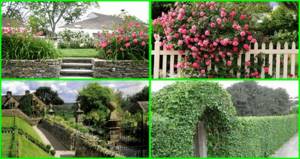
Suitable plants
When choosing plants, the main criterion is their nobility and recognition. Nondescript little-known crops are not used in this style of landscape design. In addition to shrubs and trees, perennials and bulbous plants will also be required to form flower beds.
Important! When choosing plants and, accordingly, the overall color scheme, you should take into account that the dominant shade should be green.
Shrubs
An integral part of the landscape style are bushes of classic English roses, which have a strong aroma. These plants are necessarily planted near the entrance of the house, as well as along picturesque paths. Another option is juniper bushes, which have a columnar shape achieved due to tightly adjacent shoots. A characteristic feature is the scaly needles of warm silver-blue and even blue shades.
The height of such a bush will not exceed 50–60 cm, and the possibility of growing it in tubs will allow you to install the bush in different parts of the site, thereby highlighting the necessary decorative elements. Also, group plantings of trees are often accompanied by decoration with lush hydrangea, barberry, Japanese java, lilac, jasmine and deutzia.
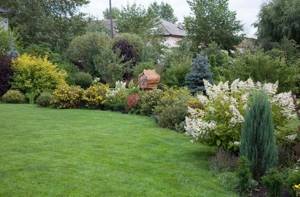
Trees
The English landscape is characterized by a large number of decorative deciduous and flowering, as well as coniferous trees (depending on the climatic conditions of the area), planted both in groups and individually. Moreover, in the first case, each composition will have a different planting density. For example, the best option for planting near a pond are willows - their long branches bent over the water will be an excellent addition to the landscape, bringing peace and tranquility. Also, maples, spruces and larches will fit organically into the site.
We recommend learning about Russian style in landscape design.
Lianas
Near most of the walls of the house, outbuildings, gazebos and fences, climbing plants are planted, which, by artificially aging them, are given a medieval appearance. The most popular are ivy, virgin grapes or hops. Thanks to their overgrown branches, such vines are able to zone the space well and create cozy and secluded corners for relaxation.

Perennial flowers
Since initially English gardens were often used for growing vegetable crops, and there was little time to care for flowers, flower beds were often planted with medicinal herbs or even wild flowers. In any case, preference was always given to unpretentious and persistent species. Today, in the compositions of landscape-style flower beds you can often find perennial plants, such as dahlias, lilies, delphiniums, gladioli, irises, daisies, peonies, phlox, cornflowers or decorative tobacco.
The most popular in English gardens are multi-tiered flower beds, in which flower varieties are planted in such a way that flowering continues almost continuously. The arrangement of plants in flower beds, despite the apparent carelessness, is systematized depending on height (starting from low-growing ones at the edges and ending with tall ones).

Bulbous plants
The best bulbous plants are: muscari, crocuses, bulbous irises, onions, wild garlic, daffodils, tulips. In this case, wild species would be the best option, since they are the ones that can give flower beds a natural appearance.
Did you know? The famous English-style garden is located in Peterhof (St. Petersburg). It was founded by Catherine II and designed under the leadership of the Italian-born architect Giacomo Quarenghi.
Features of landscape style in landscape design
To design a full-fledged park in this style, you will need a plot of at least 12 acres, and preferably more. A landscape-style canvas simply will not fit in small areas, and individual fragments will not make up a whole picture.
A natural appearance does not mean that plants should be unkempt and neglected. But the location of gazebos and ponds, the shape of the paths will be streamlined. You can create a garden with this design on any terrain (both flat and hilly). The bushes and trees will be planted differently, but the main design principles will remain the same:
- All plants grow freely. Flowers are thinned out, lawns are mowed, bushes are trimmed, but without modeling their shape.
- The color palette is calm. Soft colors will highlight the natural beauty of the landscape. At the head are all shades of green, which will be complemented by silver, pale pink, white, lilac. Such a garden is not decorated with too bright and variegated flowers.
- Familiar plants. Plants that originally grew in the area are planted on the site, without little-known and exotic “guests”.
- Decoration with natural materials. Stone and wood, forged elements and clay statues are best suited. It is better to refuse any objects and decorations made of plastic.
- Smooth flowing lines. This applies primarily to the banks of reservoirs and paths. No symmetry, sharp corners, straight lines.
Layout
The architecture of the garden in landscape style fits organically into the landscape, repeating its colors and proportions; natural bodies of water - ponds, lakes and streams - are romantically hidden in the thickets of free-growing trees. All lines of space planning are given a sinuous, asymmetrical shape, and lawns are given streamlined contours.
Other characteristic features of the free style are the inclusion of surrounding views into the landscape composition with the help of backdrop plantings, as well as the use of relief features with its hills and depressions. If the area is flat, make artificial bedding. In such gardens, multi-tiered dense borders are also used - mixborders. Among the materials, preference is always given to untreated natural stone, wood, and if concrete and brick are used, they should be covered with cracks and covered with moss. All this enhances the romantic appearance of the garden and gives it the charm of natural neglect.
Landscape style makes it possible to use techniques for visual deepening and increasing space, which is especially important for small-sized gardens. There are few flowers in the English garden; they are usually planted in compact groups. Flowerbeds are located near a house or a pond. Plants are mostly heterogeneous. Combinations of plants in color and shape play an important role.
The house in the landscape garden does not dominate the garden, but, on the contrary, hides in its foliage.
Creating a landscape style in the garden
The landscape style of landscape design of a summer cottage is created according to certain rules. First, the site is divided into zones and paths are designed (not straight and shortest roads between two points, but a route for admiring the surrounding beauty). They are made of gravel, stone or sprinkled with sand, and let wild herbs grow along the edges.
The lawn is regularly mowed and looks neat. Flower beds and flowerbeds blend into the landscape due to their subdued shades. Boxwood, lilac, jasmine and rose bushes are suitable. Of the perennial flowering plants, snowdrops, daffodils, tulips, lilies, peonies, geraniums, and sage look advantageous. Strawberry bushes and field herbs can be planted on small lawns. Chestnuts, pears, apple trees will add sophistication and decorativeness to the garden.
The gazebo is placed near a pond or, at least, in the most secluded corner of the garden. Silver willows, thujas, oaks, blue spruces, and raspberry bushes are planted near it. Garden benches can be made forged, as well as wooden and even stone. The reservoir can be either a pond or a winding stream with a dam or a small waterfall, which will break up the duckweed that covers the surface of the pond. Next to the pond, stonework, entwined with bindweed or ivy, looks good.
The walls of all buildings without exception should be hidden under the vines of climbing plants - ivy, hops, wild grapes. And violets, roses and other fragrant flowers are planted directly under the windows.
Landscape style. Provence style option:
- The style is characterized by the atmosphere of a quiet French village with its cozy way of life, the absence of pretentiousness and luxury in the design;
- using only natural materials;
- buildings and small architectural forms are painted in pastel colors: mainly white, blue, beige, pinkish, light green and warm brown;
- paths and paths winding from stones or gravel;
- the interior of the estate “French vegetable garden”;
- the use of aged items (dishes, antique furniture, wicker baskets, etc.);
- the main place of rest is a rough wooden gazebo (light curtains made of natural light fabric (plain, small flowers or checkered) are often used on the windows);
- use of flowerpots, boxes, baskets, as well as pots for planting hanging plants for planting flowers;
- carelessness in the location of plantings;
- the use of “peach walls” is palmettes planted in front of a wall painted peach or another light color;
- mandatory use of fruit trees (apple, pear, plum, apricot, peach, etc.);
- perennials: geranium, lavender, sage, wormwood, thyme, mint and other herbs;
- round flower beds are lined with brick or stone, flowers are planted in concentric circles (flowers of various shades of pink, beige blue and purple);
- use of climbing plants (grapes, ivy, etc.);
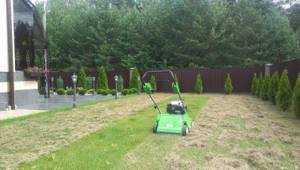
Where to order landscape landscaping?
The AG GARDEN DESIGN company offers professional services for the design of landscaping areas in landscape style.
A site decorated in this style will create a unique mood of unity with nature. If you think that creating such a garden is too difficult for you, but you have been dreaming about it for a long time, entrust its planning and arrangement to our specialists.
- Whatever the scope of the upcoming work, we are ready to offer the lowest possible prices for any of them. To order landscaping for a site in St. Petersburg, just contact us in any way convenient for you.
- We approach each site individually, without template solutions, but taking into account the interests of the owners.
- Our craftsmen are able to successfully create landscapes in a wide variety of areas, regardless of their size and features.
- We always do our work promptly, efficiently and with soul.
- With our help, your site will quickly turn into a wonderful place to relax from the bustle of the city.
Decorative landscaping of a landscape garden
The task of decorative landscaping is not just to form beautiful compositions, but also to make them voluminous and build a deep perspective. For this purpose, landscaping is most often done “tiered”, using plants of different heights and crown volumes. Trees are placed as far as possible from viewing points, closer to the boundaries of the site, forming a “forest” background. For this you can use oaks, maples, mountain ash, linden, pine, spruce, beech, ash, and aspen. Single plantings are carried out on the site. If there is a lot of space, you can plant beech or oak as a tapeworm. If the tree needs to be compact, you can choose birch, aspen, or willow. If there is a pond on the site, you can plant a willow with a weeping crown next to it. Coniferous trees are placed evenly: in winter, attention will be focused on them, and they should form beautiful groups.
Shrubs form an intermediate layer and can be used as part of decorative groups, flower beds, hedges, and linear plantings for zoning. When decorating a plot in a landscape style, you can use viburnum, elderberry, mock orange, derain, lilac, bird cherry, and chokeberry. Rose hips, barberries, and turf can be planted as low shrubs. Hawthorn looks beautiful (it has a dense crown, blooms with white or pink flowers in early summer). Decorative compositions can also be formed from conifers, using juniper, thuja, and dwarf forms of pine trees. In landscape style, coniferous shrubs and trees look impressive in combination with large boulders and stones.
Vertical gardening is carried out using hops, Siberian prince, and virgin grapes. For flower beds, you can use any meadow flowers, some types of bulbous flowers (including crocuses, irises, daffodils), as well as decorative perennials - hostas, echinacea, eschscholzia, rudbeckia, petunia, calendula, lavender and others. Flowers can be supplemented with decorative cereals. When decorating lawns, you can use regular lawn grasses or Moorish lawn. It is important that the outlines of the lawns be arbitrary so that they look like clearings. If hedges are used around the perimeter of the site or inside it, they are made free-growing (unshaped). For hedges you can use rosehip, barberry, mock orange, lilac, hawthorn, derain and other shrubs.

Decorative elements
What materials will allow you to create an English-style garden? Of course, wood, gray stone and forged elements. The latter can be used everywhere: these can be gazebos, benches, bridges, elegant partitions. Both in the garden and at the entrance to the house you can place ceramic pots with neat trees and shrubs. By the way, the British are very fond of bicycles, and therefore on an old two-wheeled vehicle you can place elegant flower boxes in which climbing plants should be planted. When creating a landscape garden, you must try to make sure that each element becomes part of nature, is not conspicuous, but is a single whole in the overall composition.
Regular style
In a garden designed in a regular style, everything is subordinated to geometry, which is the main source of beauty and harmony. The regular style is characterized by rigor, symmetry, solemnity, pomp, and the desire for a higher order. In such a garden, a person strives to subjugate nature and establish ideal order. Main features of the regular style:
- the presence of an axis of symmetry in the garden;
- straight paths;
- geometric shapes (circle, square, hexagon, rectangle) of lawns, flower beds, ponds;
- the use of ancient sculpture and fountains;
- trimmed forms of trees and shrubs.
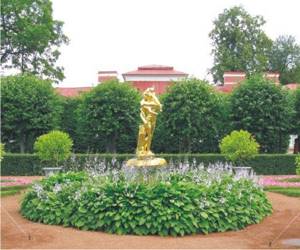
Often fountains and sculptural compositions are bordered by borders
from annuals or structural perennials such as hostas
The regular style in garden art has a rich history dating back thousands of years: it originated in Ancient Egypt and Babylon (the Hanging Gardens of Babylon), and was developed in ancient Greece and Rome. Even in the Middle Ages, regular gardens were in fashion, but they reached their peak during the Renaissance: it was at this time that gardens were created with luxurious fountains and sculpture, as well as grottoes (Villa d'Este in Italy). Topiary art appeared - curly trimming of trees and shrubs. Later, when the fashion for regular classicism came, such pearls of landscape art appeared as Versailles in France, Peterhof in Russia and many other parks. They are characterized by: the presence of water and flower parterres of geometric shapes with sculptures, luxurious gilded fountains, the disclosure of long-range perspectives, the use of diagonal radial roads, closed spaces limited by high trimmed hedges (“green halls”), curly trimming of trees and shrubs. In this case, containers in the form of antique flowerpots or a strict cubic shape, standard trees, forged benches, as well as arches, pergolas, obelisks, berso, trellises for climbing plants are used. In such gardens and parks gazebos and small pavilions are installed. Previously, by creating gardens in a regular style, people sought to show their superiority over nature and emphasized their power over it. Now there is no longer a need for this. Therefore, regular gardens are monuments of landscape gardening art and serve as a source of inspiration for the creation of new styles. Is a regular style needed today in a modern garden and in modern life with its fast rhythms? As they say, there is no arguing about tastes. The regular style is often used where it is necessary to emphasize solemnity, pomp, monumentality - in front of public buildings and government residences, in the front part of parks, etc.

In private gardens, the regular style is much less common. The choice of garden style often depends on the architectural style of the house on the site. If the house is built in a classical style (with columns, flowerpots, sculpture), then decorating the adjacent area in a regular style will be quite justified and appropriate. A formal garden requires a large space to show perspective. But even in a small garden it will be quite appropriate: you can, for example, create a small parterre of four square flower beds bordered by a low hedge, with a small fountain, a flowerpot, a sculpture or a sundial in the center. Sometimes, instead of flowers, aromatic herbs are planted in flower beds. In this case, it is good to fill the paths between the flower beds with fine gravel. Regular style is often used to decorate the entrance area, even if the rest of the area is made in a different style. A large rectangular or round parterre, or a flower bed with annuals or roses of the same height, or a lawn bordered by a narrow ridge of flowering plants would be appropriate here. Sometimes a sculpture is used in the front area in front of the house. Modular gardens or vegetable gardens are also often made in a regular style - they must have an axis of symmetry, and the paths between the modules must have hard paving (gravel, tiles, natural stone). Unfortunately, the regular style arose in countries with mild climates, where evergreens suitable for hedges and topiary trimming (yews, boxwoods, laurels) grow and winter well. In the gardens of St. Petersburg and its environs, they are replaced with alternative plants. Linden is used for tall hedges; thuja occidentalis is used to create pyramids, spirals, balls and garden sculptures. For a figured hedge - cotoneaster, hawthorn. Standard evergreen trees (laurels, ficus) are used as a replacement crop (they are removed for the winter in heated greenhouses). The regular style uses antique sculpture, sundials, fountains in the form of bowls and shells, grottoes, birdbaths, a variety of classically shaped flowerpots, as well as gazebos and various pavilions for relaxation. For paving, light-colored fine gravel is most often used. Reservoirs have a strict geometric shape (circle, square, polyhedron) and are located symmetrically relative to the main axis.
What you need to know about landscape style?
Initially, this style had a huge number of opponents: it was even sarcastically called the style of the lazy. The fact is that in the 18th century people considered it a movement characterized by achieving excellent results without much effort. However, in most British estates, this style has taken root over the years.
It is worth noting that the owners of the estates achieved the desired result through enormous labor: they dug canals, created artificial lakes, drained swamps and swamped waterless areas. Over time, strong views emerged on what a truly English park should look like. What was needed was a pond, a descent to the water and a nice forest edge. At the same time, it was extremely important that all these components were not a scaled-down model. Everything had to be real. Let's say right away: you are unlikely to be able to create a magnificent English park on two or three acres. The garden plot should be large enough to accommodate a small swamp or lake, shrubs, flowers and trees.
